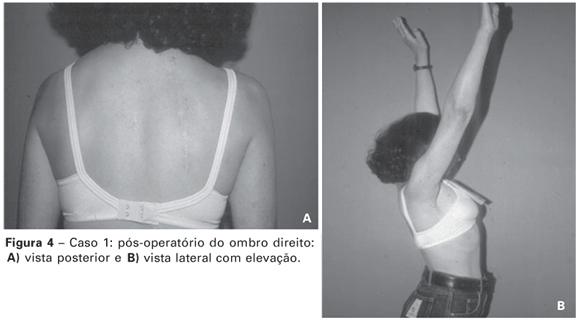OBJECTIVE: To evaluate the surgical scapulothoracic arthrodesis technique in facioscapulohumeral dystrophy (FSHD) by analyzing post-op results and complications. METHODS: from February 1992 to February 2006, eight scapulothoracic arthrodesis procedures were performed in five patients at the Orthopedics and Traumatology Department of the Medical Sciences School at the Santa Casa Hospital of São Paulo (DOT-FCM-SCSP). The criteria for surgical indication were pain, functional deficit of the limb involved, muscular fatigue, and esthetic deformity. The surgical technique used for the arthrodesis fixated the scapula to the thoracic wall by tying a narrow, slim plate with No. 5 polyester threads and placing an autologous cancellous bone graft. RESULTS: Mean follow-up of the patients was of 124 months. Comparing the range of movement before and after surgery, the authors observed an improvement in raising, lateral rotation being kept, with the pre-op UCLA ranging from 7 to 11, and the post-op UCLA ranging from 29 to 33. Complications included two cases of pneumothorax; one case of the detachment of synthesis material, and one case of lack of bone fusion. COMMENT: Arthrodesis fusion was achieved in six cases, besides improvement in pain and raising. Two cases were reoperated on, one of them due to breakage of the material and another one due to lack of fusion. All cases evolved on to fusion.
Muscular dystrophies; Facioscapulohumeral muscular dystrophy; Scapula; Arthrodesis; Evaluation studies

 Evaluation of scapulothoracic arthrodesis results in the treatment of winged scapula in facioscapulohumeral dystrophy
Evaluation of scapulothoracic arthrodesis results in the treatment of winged scapula in facioscapulohumeral dystrophy



